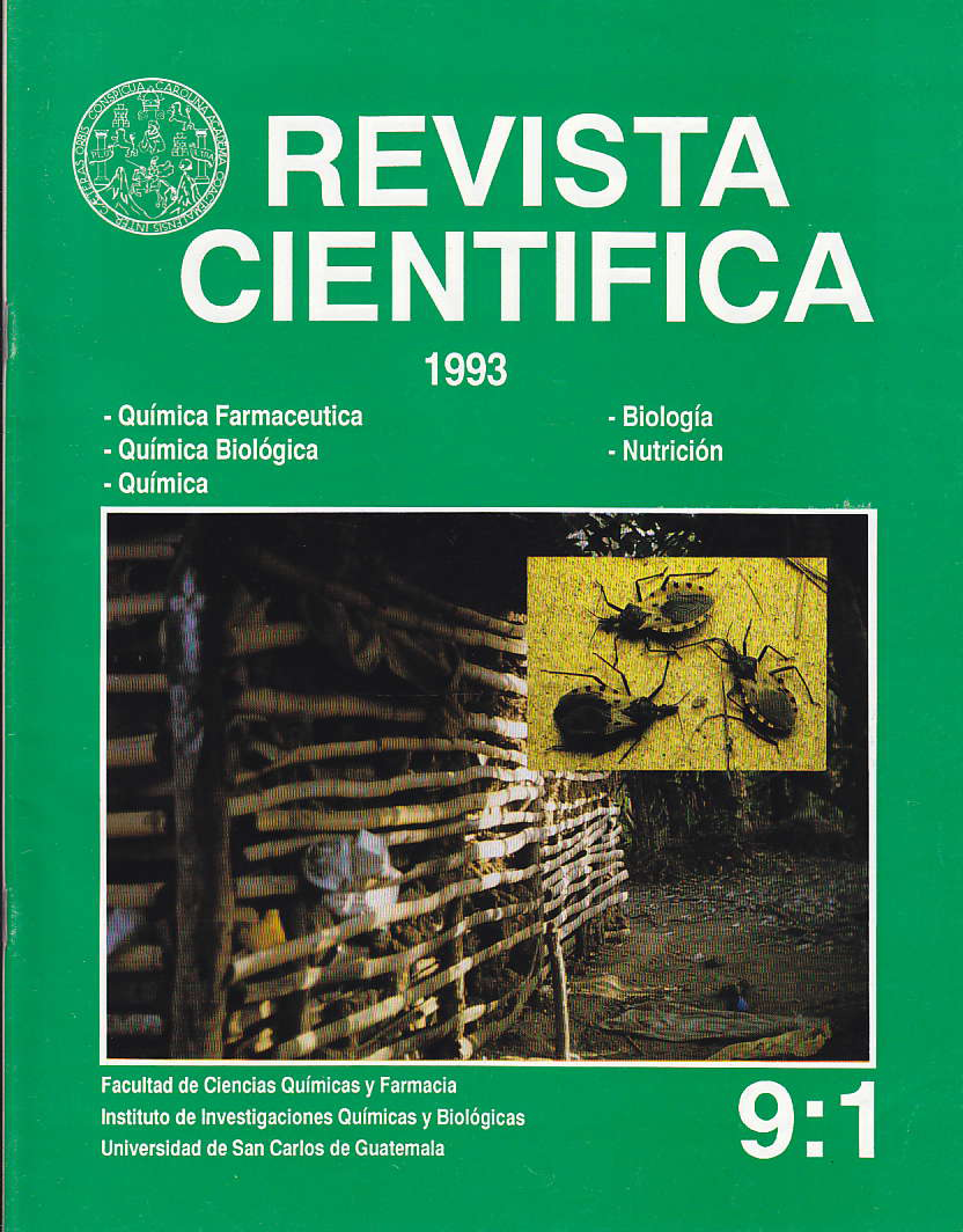In vitro pharmacological and toxicological evaluation of some plants commonly used in Guatemala against malaria
DOI:
https://doi.org/10.54495/Rev.Cientifica.v9i1.393Keywords:
pharmacological evaluation, toxicological evaluation, "in vitro", malaria, plants, GuatemalaAbstract
Malaria, an acute and frequently chronic disease caused by parasites of the genus Plasmodium, is still the most important parasitic disease worldwide. It is found in approximately one hundred countries, of which around one million children die annually from this disease in Africa alone. The reasons why malaria still represents a serious problem are several: the acquired resistance of mosquitoes to insecticides and the difficulty in implementing or maintaining effective control schemes. The resistance of the main causative agents, Plasmodium falciparum and Plasmodium vivax, to the classic drugs chloroquine and primaquine, has probably been the most important problem. Population migration has also contributed to the spread of this resistance to other regions. This is how a great interest has arisen worldwide in searching for new antimalarial agents with a mechanism of action different from those of the drugs already available, and because of this, research on plants has become even more important today, especially after the discovery of the new antimalarial agent artemisinin, an active ingredient isolated from the plant Artemissia annua, from China.
Downloads
References
Peeters, P. Liposomes, immunoliposomes and antibodies in the chemotherapy of Plasmodium berghei infections. PhD thesis. Catholic University of Nijmegen. The Netherlands. 1988. 160 P.
Phillips, R. Malaria. Studiesnin Biology No. 152. Camelot. Great Britain. 1983. 58 P.
Luzzi, G.; D. Warrell, A. Barnes et al. Treatment of primaquine resistant Plasmodium vivax malaria. Lancet, 1992. 340:310, https://doi.org/10.1016/0140-6736(92)92404-4 DOI: https://doi.org/10.1016/0140-6736(92)92404-4
Peters, W. Chemotherapy and drug resistance in malaria. Academic Press. London. 1 970. Pp: 88-106.
Eling, W.; a. van Zon & C. Jerusalem. The course of a Plasmodium berghei infection in six different mouse strains. Z. Parasitenk. 1977, 54: 2445, https://doi.org/10.1007/BF00380634 DOI: https://doi.org/10.1007/BF00380634
Zafar, M.;M. Hamdard & A. Hameed. Screening of Artemissia absinthium for antimalarial effects on Plasmodium berghei in nice: a preliminary report. J. Ethnopharmacol. 1990. 30:223-226, https://doi.org/10.1016/0378-8741(90)90011-H DOI: https://doi.org/10.1016/0378-8741(90)90011-H
Polder, T. Morphology of cerebral malaria, clinical and experimental study. PhD thesis. Faculteit der Geneeskunde, Vrije Universiteit te Amsterdam. Amsterdam, the Netherlands 1989. 175 P.
Downloads
Published
How to Cite
Issue
Section
License
Copyright (c) 1993 Medinilla Aldana Beatriz Eugenia

This work is licensed under a Creative Commons Attribution 4.0 International License.
Authors who publish with this journal agree to the following terms:
- Authors retain copyright and grant the journal right of first publication with the work simultaneously licensed under a Creative Commons Attribution License 4.0 that allows others to share the work with an acknowledgement of the work's authorship and initial publication in this journal.
- Authors are able to enter into separate, additional contractual arrangements for the non-exclusive distribution of the journal's published version of the work (e.g., post it to an institutional repository or publish it in a book), with an acknowledgement of its initial publication in this journal.
- Authors are permitted and encouraged to post their work online (e.g., in institutional repositories or on their website) prior to and during the submission process, as it can lead to productive exchanges, as well as earlier and greater citation of published work.









